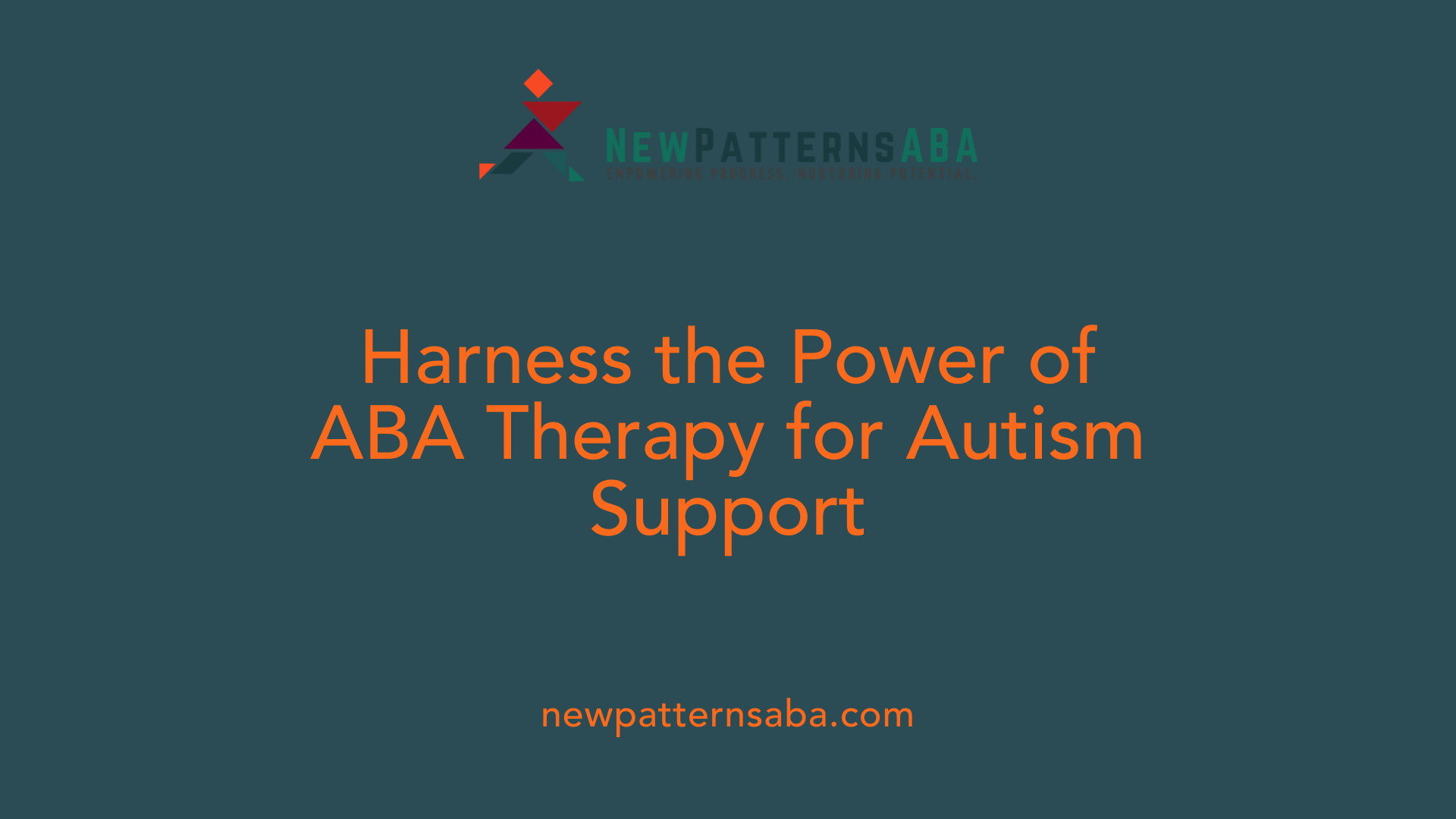Harnessing Behavioral Science to Enhance Emotional Regulation in Autism
Understanding Emotional Regulation Challenges in Autism
Emotional regulation—the ability to manage and respond to emotional experiences—is often a significant challenge for individuals with autism. Distinguishing between different types of emotional outbursts and understanding their underlying causes is crucial for developing effective strategies. This article explores how therapeutic approaches, especially Applied Behavior Analysis (ABA), support emotional regulation skills in autism by addressing behavioral challenges and fostering meaningful skill development.
Differentiating Meltdowns from Tantrums: A Foundation for Supportive Intervention

What are the differences between meltdowns and tantrums?
Meltdowns and tantrums, though sometimes confused, have distinct causes and manifestations. Tantrums are deliberate, goal-oriented behaviors—children may cry, scream, or protest to get attention, avoid a task, or receive something desired. In contrast, meltdowns are involuntary reactions stemming from nervous system overload. Rather than intentional defiance, meltdowns are responses to an internal state of neurobiological chaos.
What triggers meltdowns from a neurobiological perspective?
Meltdowns occur when the brain perceives a threat to survival, activating a stress response. This perception triggers overwhelming emotions and bodily reactions such as crying, screaming, or stomping. The central nervous system becomes flooded with signals that the individual cannot easily regulate, leading to behaviors beyond their control.
How do sensory processing difficulties relate to meltdowns in autism?
Individuals with autism often experience sensory processing challenges, meaning their brains interpret sensory inputs (like sounds, lights, or touch) differently than neurotypical individuals. This heightened or distorted sensory perception can overload the nervous system, precipitating meltdowns. For example, an unexpected loud noise or a scratchy fabric might feel unbearable, triggering an intense response as the brain struggles to manage these inputs.
Understanding these differences is crucial for caregivers and professionals so they can respond appropriately. While tantrums may benefit from behavioral strategies and clear boundaries, meltdowns require supportive, compassionate approaches focused on regulation and safety rather than discipline.
The Neurobiology of Meltdowns: Understanding Involuntary Emotional Responses

Neurobiological Chaos and Survival Response
Meltdowns arise from a state of neurobiological chaos where the brain perceives a threat to survival. This overload triggers an instinctive, involuntary survival response, not under conscious control. The nervous system reacts as if facing danger, disrupting typical emotional regulation.
Involuntary Reactions Like Crying, Screaming, Stomping
During a meltdown, individuals often exhibit intense expressions such as crying, screaming, or stomping. Unlike tantrums, these actions are not deliberate attempts to communicate or manipulate but are automatic responses to the overwhelming stress their brain and body experience.
Sensory Processing Differences Leading to Nervous System Overload
Individuals, especially those with autism, often have unique sensory processing. Their brains interpret sensory input—such as lights, sounds, or textures—differently, sometimes amplifying sensations. This can overwhelm the nervous system, pushing it beyond its threshold and precipitating a meltdown.
Understanding that meltdowns stem from uncontrollable neurobiological reactions rather than intentional misbehavior is essential. It allows caregivers and professionals to focus on supportive strategies that promote safety and regulation rather than punishment or correction.
Effective Strategies for Managing Meltdowns: Regulation, Validation, and Safe Spaces

Why Are Standard Calming Cues Often Ineffective During Meltdowns?
Meltdowns happen as involuntary responses when the nervous system is overwhelmed, especially in individuals with sensory processing difficulties, such as those with autism. Because these reactions stem from neurobiological chaos, common calming techniques like telling someone to "calm down" or asking them to behave differently often don’t work. During meltdowns, the individual isn’t making a deliberate choice; their brain perceives a threat to survival, triggering an uncontrollable emotional release.
Why Focus on Regulation and Validation?
Instead of trying to stop the behavior immediately, effective strategies emphasize helping the person regulate their nervous system. Regulation involves using either self-soothing methods or caregiver support to help reduce sensory overload and bring emotional responses under control. Validation plays a critical role because recognizing and accepting the individual’s feelings helps them feel understood rather than judged, which can reduce stress and prevent escalation.
How Can Creating Safe Environments Help?
Safe spaces provide an environment where the individual feels protected from overwhelming sensory stimuli or emotional triggers. This calm setting encourages the nervous system to stabilize. Features of safe environments might include soft lighting, quiet sounds, and minimal visual distractions. When caregivers prioritize safety and comfort, it supports de-escalation and reassures the individual that they are not in danger.
What Are the Recovery Steps After a Meltdown?
Recovery typically follows three steps:
Regulate: Help the person use self-regulation techniques or provide external support to calm their nervous system.
Relate: Provide love, reassurance, and validation to rebuild emotional connection and trust.
Reason: Once calmness is restored, discuss the event in a supportive way to help understand triggers and develop coping strategies for the future.
These steps not only help manage the current meltdown but also promote resilience and improved emotional regulation over time.
By accepting that meltdowns are involuntary and focusing on regulation, validation, and safe environments, caregivers and professionals can more effectively support individuals experiencing sensory overload and emotional distress.
Applied Behavior Analysis (ABA) Therapy: Science-Based Support for Autism

What is Applied Behavior Analysis (ABA) therapy, and how is it used to support individuals with autism?
Applied Behavior Analysis (ABA) therapy is a science-based approach grounded in behavioral analysis techniques that observe and measure behavior to understand how the environment influences it. The primary purpose of ABA is to increase useful behaviors—such as communication, social interaction, and self-care—and reduce problematic behaviors like tantrums or meltdowns.
ABA therapy employs a methodical process starting with a Functional Behavior Assessment (FBA). This assessment identifies specific triggers and causes behind behaviors, enabling specialists to develop personalized Behavior Intervention Plans tailored to each individual's needs.
A core strategy within ABA is positive reinforcement, which encourages desirable behaviors by rewarding them, making it more likely these behaviors will repeat. The therapy also uses structured teaching methods that break down skills into smaller, manageable steps, facilitating skill acquisition across different domains including motor skills, academic ability, and emotional regulation.
Overall, ABA's strength lies in its data-driven, continuous evaluation process, which allows therapists to adapt interventions dynamically. This individualized and systematic approach helps people with autism improve essential life skills and achieve greater independence, with support continuing across various environments such as home, school, and community settings.
Core Principles and Professional Delivery of ABA Therapy

What are the core principles behind ABA therapy for autism?
ABA therapy is grounded in the scientific study of behavior and employs systematic strategies to increase useful behaviors while reducing problematic ones. Central to ABA is the ABC model — examining Antecedents (what happens before a behavior), Behavior itself, and Consequences (what follows). This analysis helps identify the function of behaviors, such as seeking attention, avoiding tasks, or sensory stimulation.
A primary principle is Positive Reinforcement, where desired behaviors are encouraged through rewards. Techniques like prompting (giving hints or assistance), fading (gradually removing prompts), shaping (reinforcing successive approximations), and chaining (breaking complex tasks into smaller steps) are essential to effectively teach new skills.
ABA emphasizes skill generalization, meaning skills are practiced and applied across different settings and situations to ensure lasting behavioral change. Objective data collection is continually used to monitor progress and adapt interventions, maintaining a personalized approach.
Who typically provides ABA therapy, and what qualifications do these professionals hold?
ABA therapy is delivered by a team of specialized professionals including Board Certified Behavior Analysts (BCBAs), Registered Behavior Technicians (RBTs), and sometimes Board Certified Assistant Behavior Analysts (BCaBAs).
BCBAs hold graduate or doctoral degrees and are certified by the Behavior Analyst Certification Board. They design treatment plans, oversee therapy, and analyze data to ensure effective progress.
RBTs are trained paraprofessionals who implement therapy sessions directly, collect data, and support the learner under BCBA supervision.
BCaBAs hold undergraduate level certifications and assist BCBAs in clinical services within their scope.
These professionals collaborate closely to provide ethical, evidence-based, and individualized services tailored to each person's unique needs and goals.
Behavioral Improvements and Skill Development Through ABA Therapy
What types of behavioral improvements can ABA therapy help achieve in individuals with autism?
ABA therapy supports individuals with autism by enhancing a broad spectrum of behavioral skills. It promotes advancements in social communication and language development, encouraging better interaction with peers and adults. These improvements help individuals express their needs and emotions more effectively.
Self-care skills such as dressing, eating, and toileting also benefit from ABA, fostering greater independence in daily living activities. Additionally, ABA targets the reduction of challenging behaviors like aggression and tantrums by substituting them with more appropriate responses.
An essential part of ABA involves analyzing environmental factors affecting behavior through the Antecedent-Behavior-Consequence (ABC) model. This approach helps identify triggers and consequences, enabling tailored interventions that boost attention, memory, and emotional regulation.
By systematically breaking down tasks and reinforcing positive behaviors, ABA encourages the development of motor skills, academic abilities, and social understanding. These combined gains contribute to cognitive growth and improved emotional control.
Overall, ABA therapy is an individualized, evidence-based method aimed at increasing beneficial behaviors and minimizing problem behaviors. This comprehensive approach improves life quality and functional independence for those on the autism spectrum.
Preventive and Holistic Approaches to Emotional Regulation in Autism
What Are Functional Behavior Assessments and Behavior Logs?
Functional Behavior Assessments (FBAs) and behavior logs are tools used to understand the "why" behind a child’s behaviors, especially meltdowns. FBAs systematically gather data on behaviors, identifying triggers and the outcomes that maintain them. Behavior logs complement FBAs by tracking daily patterns, noting changes in environment, interactions, or sensory inputs that may precede emotional overload.
How Do These Tools Help Identify Triggers and Patterns?
By analyzing the collected data, caregivers and professionals can pinpoint consistent triggers such as loud noises, particular social situations, or sensory overload. Recognizing these patterns is essential for developing strategies to prevent meltdowns before they escalate.
Why Is Treating Comorbid Conditions Important?
Meltdowns are often intensified by underlying comorbid conditions like anxiety, sleep disorders, or gastrointestinal issues. Addressing these medical and psychological factors supports emotional regulation by reducing additional stressors affecting the nervous system.
How Can the Reggio ABA Approach Support Emotional Regulation?
The Reggio ABA approach blends traditional Applied Behavior Analysis with creativity, exploration, and child-led learning. This integration promotes not only behavior modification but also emotional regulation, self-confidence, and meaningful communication. Encouraging exploration helps children express feelings safely and fosters resilience.
Preventive strategies that combine behavioral understanding, medical treatment, and innovative therapy approaches create a comprehensive framework for managing emotional regulation challenges in autism.
| Approach | Focus | Outcome |
|---|---|---|
| Functional Behavior Assessments | Identifying behavioral triggers and purposes | Tailored intervention plans to prevent meltdowns |
| Behavior Logs | Tracking daily behavior and environmental changes | Recognizing patterns to anticipate emotional overload |
| Treatment of Comorbidities | Managing anxiety, sleep, and health issues | Reduced stressors contributing to nervous system overload |
| Reggio ABA Approach | Integrating creativity and exploration with ABA | Enhanced emotional regulation, confidence, and communication |
Advancing Emotional Regulation Through Evidence-Based Behavioral Therapies
Improving emotional regulation skills in individuals with autism requires an informed, compassionate, and science-driven approach. Understanding the distinction between meltdowns and tantrums, addressing sensory and neurobiological challenges, and employing effective strategies during emotional episodes form the foundation of supportive interventions. Applied Behavior Analysis (ABA) therapy stands out as a robust framework that not only mitigates problematic behaviors but also cultivates essential skills for independence and social engagement. Delivered by qualified professionals and tailored through ongoing assessment, ABA programs empower individuals with autism and their families. Preventive strategies and holistic care addressing comorbidities further enhance outcomes, underscoring the importance of comprehensive support to improve emotional regulation and quality of life.
References
- Meltdowns & Calming Techniques in Autism
- ABA Therapy for Autism | Benefits, Techniques & How It ...
- Applied Behavior Analysis (ABA)
- Applied Behavior Analysis (ABA)
- Applied Behavior Analysis in Children and Youth with Autism ...
- The Controversy Around ABA
- Applied Behavior Analysis (ABA) for Children With Autism






